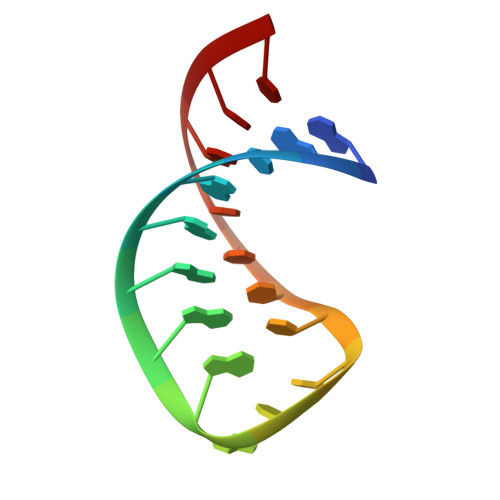A retroviral RNA kissing complex containing only two G.C base pairs.
Kim, C.H., Tinoco Jr., I.(2000) Proc Natl Acad Sci U S A 97: 9396-9401
- PubMed: 10931958
- DOI: https://doi.org/10.1073/pnas.170283697
- Primary Citation of Related Structures:
1F5U - PubMed Abstract:
The dimerization of viral RNA through noncovalent interactions at their 5' ends is a key step in the life cycle of retroviruses. In Moloney murine leukemia virus, three stem-loops are important in this process. One is a self-complementary tetraloop (H1), but the other two stem-loops (H2, H3) contain highly conserved GACG tetraloops that are not self-complementary sequences. Using two-dimensional NMR, we determined the structure of the H3 stem-loop. Surprisingly, it forms a stable, homodimeric kissing complex through only two intermolecular G small middle dotC base pairs. Cross-strand interactions of the adenines adjacent to the intermolecular G small middle dotC base pairs, plus unusual strong electrostatic interactions around the base pairs, contribute to the unexpected stability. This structure shows how even stem-loops without self-complementary sequences can facilitate the intermolecular recognition between two identical RNAs, and thus initiate dimerization and encapsidation of retroviral RNAs.
- Department of Chemistry, University of California, and Physical Biosciences Division, Lawrence Berkeley National Laboratory, Berkeley 94720-1460, USA.
Organizational Affiliation:
















